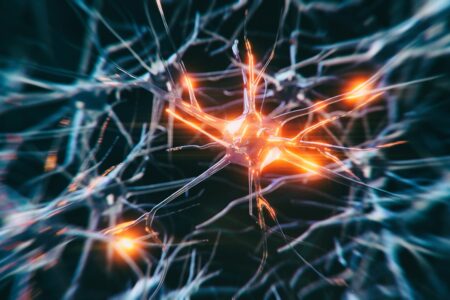Walking Difficulties May Be an Early Sign of Alzheimer’s
The study, which was written up in the journal Current Biology, employed a computational model to delve deeper into the complexities of navigational errors that have already been linked to Alzheimer’s disease. Participants were divided into three groups by researchers, under the direction of Professor Neil Burgess and colleagues in the Space and Memory group* at the UCL Institute of Cognitive Neuroscience: healthy younger participants (a total of 31), healthy elderly participants (a total of 36), and patients with mild cognitive impairment (a total of 43). They then gave them a task to accomplish while using virtual reality goggles that enabled genuine motions. Participants in the trial followed a route that included two straight legs connected by a turn and was marked out by numbered cones. They then had to go alone back to where they had started.
The task was carried out under three different environmental conditions designed to test the participant’s navigational abilities: a virtual setting that remained intact, one in which all ground details were temporarily replaced with a plain texture, and one in which all landmarks were temporarily removed. The study’s findings revealed that patients with early Alzheimer’s regularly underestimated the number of turns along the route and shown greater directional unpredictability. The older participants who were in good health or those who had modest cognitive impairment, however, and who did not exhibit early indicators of Alzheimer’s disease, did not exhibit these particular abnormalities.
This may aid with diagnosis since it suggests that these navigational errors are unique to Alzheimer’s disease rather than an effect of normal aging or general cognitive loss. Dr. Andrea Castegnaro, co-first author and from the UCL Institute of Cognitive Neuroscience, stated that by focusing on particular navigational errors, their findings “offer a new avenue for the early diagnosis of Alzheimer’s disease.” We are aware that additional research is necessary to support these preliminary findings.
We work to create practical tests that are simple to incorporate into clinical settings while taking into account standard limitations like time and space. It can be difficult to achieve the standards of traditional navigation exams in a therapeutic setting. Our research focuses on particular navigational features that are better suited to these limitations.We are hoping to collect enough information for a trustworthy diagnosis in a time-effective manner by developing these tests to be both quick and comprehensive, boosting the chance of their general acceptance.
In the UK, there are reportedly 944,000 dementia sufferers, and Alzheimer’s disease is assumed to be the cause of more than 60% of cases. Similar predictions suggest that, barring medical advances, the number of Americans 65 and older who have Alzheimer’s disease could double, reaching 13.8 million by 2060. These patterns show the growing toll Alzheimer’s disease is taking on healthcare systems and society at large.
For improved disease management and therapy, early diagnosis is essential. Recent developments in blood testing can now identify amounts of tau and amyloid proteins that may indicate a possible Alzheimer’s disease, however these tests might not be enough on their own. According to Dr. Castegnaro, “Cognitive exams are still required to determine when the first cognitive impairments manifest, and existing spatial memory tests used in clinics frequently depend on verbal proficiency. Our tests are designed to provide a more useful tool that is independent of language or cultural context.
REFERENCES:
https://www.healthline.com/health-news/difficulty-walking-could-be-an-early-sign-of-alzheimers-disease
https://jnnp.bmj.com/content/75/2/196
https://www.ucl.ac.uk/news/2023/oct/certain-navigational-mistakes-could-be-early-signs-alzheimers-disease
For Alzheimer Disease medications that have been suggested by doctors worldwide are available here https://mygenericpharmacy.com/index.php?cPath=77_239
